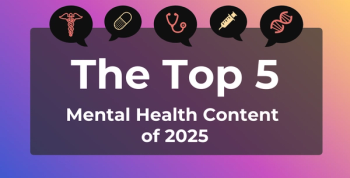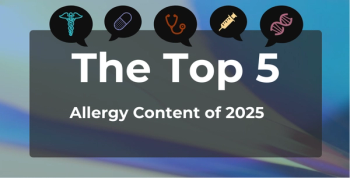
From Persistent to Preventable: The Impact of Policy on the Future of Forever Chemicals
This second installment on the threat of forever chemicals examines the impactful policies brought about during the Biden-Harris administration that are set to play a role in the future manufacturing, use, and monitoring of these harmful substances.
Per- and polyfluoroalkyl substances (PFAS, or “forever chemicals")
In response to this more-or-less grim reality, the Environmental Protection Agency (EPA), National Institute of Environmental Health Sciences (NIEHS), and Biden-Harris administration have taken action in recent years to shape impactful policy and fund essential research on PFAS. As these initiatives seek to influence beneficial change, the second installment of this series on PFAS will survey these very policies and ongoing efforts to shed light on a more hopeful, cleaner future.
Ramping Up Safety and Standardization
Under the Biden-Harris administration, numerous critical rulings and standards have been implemented for the betterment of public health. “President Biden believes every American deserves to breathe clean air, drink clean water, and eat safe food — free of chemicals and pollutants that harm the health and wellbeing of children, families, and communities,” the administration declared in a
Beginning in 2021, the Biden-Harris administration announced the EPA’s launch of a
In 2021, EPA also issued multiple actions to bolster data collection and monitoring of PFAS in drinking water, introduced new regulatory determinations to include perfluorooctanesulfonic acid (PFOS) and perfluorooctanoic acid (PFOA) in the Safe Drinking Water Act, created standardized toxicity assessments and hazard evaluations, and developed an “EPA Council on PFAS” to oversee and expand upon these initiatives.4
Continuing into 2022, the EPA made lots of progress to support the Biden-Harris administration’s goal of protecting communities from the harms of PFAS. Among these efforts were various actions for clean water, including the proposal of the first Clean Water Act to investigate PFOA and PFOS levels in freshwater, aquatic wildlife. In June 2022, the EPA also announced 4 PFAS-related health advisories for drinking water and called for the allocation of $1 billion in Bipartisan Infrastructure Law grants across different states to address PFAS-contaminated water throughout disadvantaged or otherwise smaller communities. The following year, the EPA announced that $2 billion from President Biden’s law was available and would be distributed through the EPA-led Emerging Contaminants in Small or Disadvantaged Communities grant program.
Transparency and Awareness Are Bliss
Complimenting these efforts, the EPA proposed labeling PFOA and PFOS as hazardous substances under the Comprehensive Environmental Response, Compensation, and Liability Act (CERCLA, or Superfund). This addition was finalized in 2024 and designed to increase transparency about their use, release, and ensure polluters are held accountable for their cleaning up their mess. Furthermore,
A
The remainder of 2023 notably saw the EPA further improve monitoring efforts by removing exemptions centered around the use of PFAS in smaller amounts. Previously, facilities were not required to report on their PFAS use if the concentrations fell beneath a certain threshold.
2024: Present PFAS Outlook
To kickstart 2024, the EPA published 3 methods to improve the measuring of PFAS in the environment: Final EPA
The General Services Administration (GSA) and EPA additionally made changes to custodial specifications outlined by the GSA to make sure that cleaning products bought for use in federal buildings will be PFAS-free.
Of great importance has been the EPA’s issue of the first-ever legally enforceable, nation-wide standard for drinking water.6 What are referred to as
Another noteworthy achievement from 2024 includes the FDA’s announcement that PFAS used in food packaging will no longer be sold in the US, and the issuance of an import alert for chemically-contaminated food products.7
These totality of these ruling and initiatives are but a glimpse into ever-growing efforts the Biden-Harris Administration and other governmental agencies are taking to better understand and combat PFAS. As AJMC discusses in the next and final installment on PFAS, these actions have led to the development of interim guidelines for PFAS destruction and disposal that are set to make a difference in the everyday lives of US residents.4
For more information on the current state of PFAS research and ongoing research, please visit the
References
1. Interstate Technology Regulation Council. History and use of per- and polyfluoroalkyl substances (PFAS) found in the environment. Updated September 2023. Accessed August 23, 2024.
2. Perfluoroalkyl and polyfluoroalkyl substances (PFAS). National Institute of Environmental Health Sciences. Updated May 3, 2024. Accessed August 9, 2024.
3. Fact sheet: Biden-Harris administration launches plan to combat PFAS pollution. Whitehouse.gov. News Release. October 18, 2021. Accessed August 26, 2024.
4. Key EPA action to address PFAS. EPA. Updated May 7, 2024. Accessed August 23, 2024.
5. Comprehensive Environmental Response, Compensation, and Liability Act (CERCLA) and federal facilities. EPA. Updated July 10, 2024. Accessed August 26, 2024.
6. Final PFAS national Primary Drinking Water Regulation. EPA. Updated July 12, 2024. Accessed August 26, 2024.
7. FDA Announcements on PFAS and Other U.S. Government Information. FDA. Updated April 18, 2024. Accessed August 26, 2024.
Newsletter
Stay ahead of policy, cost, and value—subscribe to AJMC for expert insights at the intersection of clinical care and health economics.







































